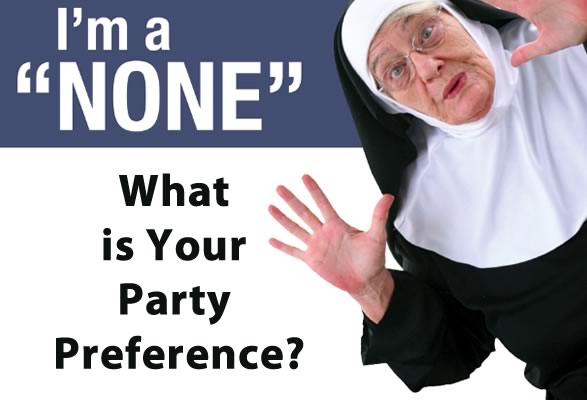Previous CA Election Rules Stacked Against Independent Voters

Under the old rules, California had a party-controlled ‘Open’ system. In previous years during the June primary election, every voter received a ballot that contained initiatives (also known as “propositions”) and the names of candidates for non-partisan offices. The names of candidates running for partisan office, however, only appeared on the ballots of their respective parties. There was no “independent” primary ballot, or candidates. Candidates who were not affiliated with one of the qualified parties were excluded from the electoral process until November.
When voting, registered party members received a ballot that listed only the names of candidates from their party. Independent voters received a ‘non-partisan’ ballot, which limited to the initiatives and non-partisan candidates. Independent voters could however request a partisan ballot and participate in one of the party’s primary elections by consent of the party.
In California, the Democratic Party initially resisted but eventually chose to allow independents to participate in its primaries. The Republican Party refused to allow independent voters to participate in its primaries. Interestingly, in that time, the Republican Party shrunk precipitously, the Democrats held steady, and the percentage of voters choosing to join no party increased by approximately 30%. In any regard, a partisan candidate could make the general election ballot by getting the highest number of votes in his or her party’s primary.
To qualify for the November ballot, Independent candidates had to circulate voter-signed nominating petitions and obtain a statutorily determined number of signatures within a defined 60-day period, starting the day before the primary election. Only if an independent candidate succeeded in obtaining the required number of verified signatures would his or her name be included on the general election ballot. The candidate with the highest vote total determined the winner of the general election.
This party controlled ‘Open Primary’ system was adopted by the California legislature after the United States Supreme Court ruled that California’s voter adopted Blanket Primary violated the U.S. Constitutional right of “private association”. In the Blanket Primary all candidates appear on a single ballot in the primary with the top vote getter from each political party moving on to the general election.
Before, only “qualified” political parties could participate in the primary election process. To become qualified, a party had to hold a caucus or convention to elect temporary officers and designate a party name, file a formal notice of intent to hold a primary election with the secretary of state, and either (1) “achieve a statewide registration with that party designated by registrants equaling at least 1% of the total votes cast at the preceding gubernatorial election” no later than 135 days before the scheduled primary election date, or (2) file a petition signed by voters equal to “at least 10% of the total votes cast” in the preceding gubernatorial election (Cal. Elec. Code § 5100(a)–(c)). Based on the total votes cast in the 2006 gubernatorial election, a party seeking “qualified” status for the June 8, 2010 primary needed to achieve 88,991 registrants, or 889,906 signatures, by January 25, 2010.
Only individuals running as candidates of a qualified political party could participate in the primary election. Independent or unaffiliated candidates, in contrast, had to participate in an independent nominating procedure to gain access to the general election ballot.
California law imposed two principal restrictions upon who may run as an independent candidate. First, pursuant to the so-called “sore loser” provision of the Elections Code, a potential candidate could not have participated in the primary election as a nominated candidate or write-in candidate and been defeated for the party’s nomination. Second, an independent candidate could not have been registered in California as being affiliated with a qualified political party for thirteen months prior to the general election (i.e., the candidate must have been unaffiliated since October 2, 2009).
Unlike partisan candidates, independent candidates for statewide office had to submit nomination papers with signatures equal to 1%of the number of registered voters of the state at the time of the close of registration prior to the preceding general election. This means that while a partisan candidate need only have obtained between 65 and 100 nominating signatures to access his or her party’s primary ballot as a gubernatorial candidate, an independent candidate seeking to run for Governor in the 2010 general election must have obtained 173,041 nominating signatures.
The disparities at the Congressional, State Senate, and State Assembly level, were even more dramatic. While partisan candidates only had to get 40 to 60 signatures to get their name on the ballot, irrespective of district, independent candidates had to submit nomination papers with signatures equal to 3% of the number of registered voters in the district during the last general election. In other words, there were different signature thresholds for each of the fifty-three House of Representatives districts, forty State Senate districts, and eighty State Assembly Districts.




